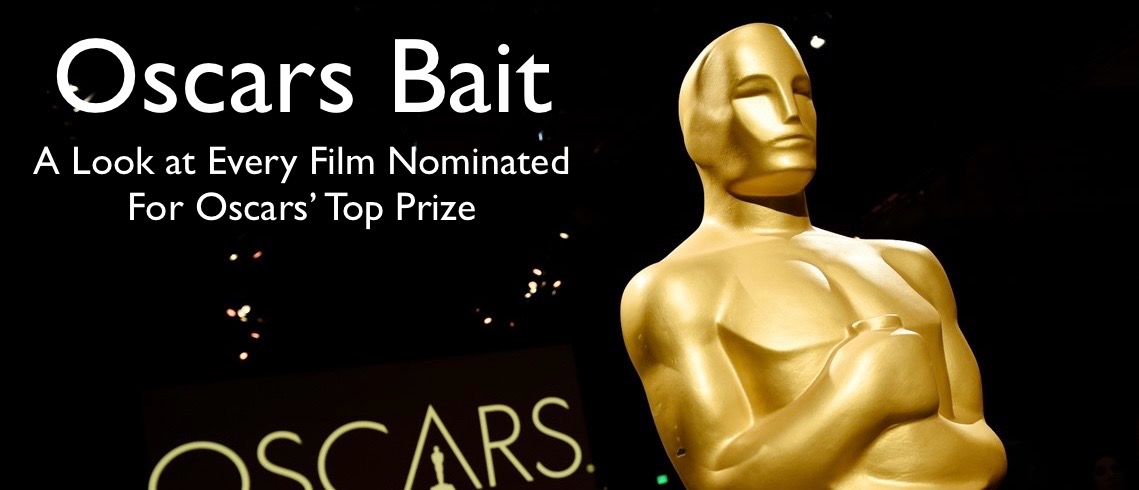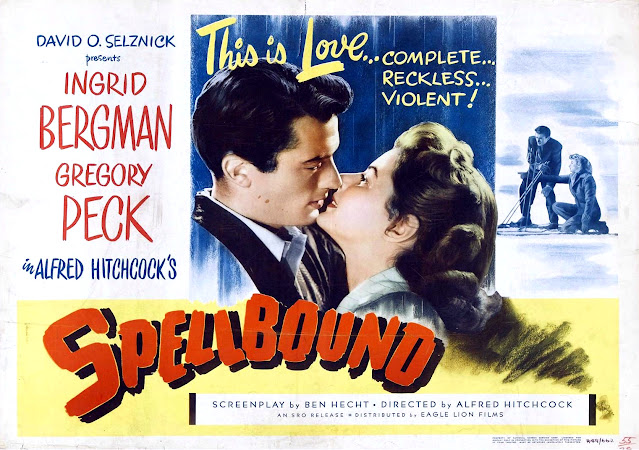With a title like Spellbound you would think you are getting a film about witchcraft. The title doesn’t convey in any way what the film actually is about. That being said, adding Alfred Hitchcock’s name above the title conveys enough to at least assume the genre of the film. Add to that the eye widening credit for Salvador Dali for dream sequences imagery and you know you are in for a strange and surrealistic film. Hitchcock rarely has a miss in his catalog and this is no different but when looking at it after nearly eighty years it has aged poorer than many of his best works. The film spends a great deal of time psychoanalyzing the leading man and a lot of it amounts to jumping to conclusions and psychobabble. The romance between the two leads feels forced, too, which, between this and the psychobabble, makes for a film that is hard to buy into on any level.
Dr. Murchison (Leo G. Carroll) is being forced into retirement shortly after returning from an absence brought on by nervous exhaustion. His replacement, Dr. Anthony Edwards (Gregory Peck) arrives at the hospital and surprises everyone for being so young. The celebrated doctor has several books including one on guilt displacement that is part of the mental hospital’s library. Psychoanalyst Dr. Constance Petersen (Ingrid Bergman) is immediately smitten by Dr. Edwards. While attending a dinner together she notices that he has a peculiar phobia about sets of parallel lines against a white background. On another occasion a similar pattern on her robe triggers the same phobia. She tracks down a copy of his book in the library, signed by the good doctor himself, and compares the signature with one from a note he wrote her earlier and discovers they don’t match. When Dr. Edwards disappears in the night and the body of the real Dr. Edwards is found shot in the back and fallen off a cliff at a ski resort, the fake doctor becomes the prime suspect.
As a mystery film this one is just average. Gregory Peck is doing a fine job with what he’s given but it is obvious almost immediately that he is an imposter. The reasons behind the subterfuge amounts to little more than a bunch of psychobabble about displaced guilt buried in repressed memories. The way the mystery is unraveled is unrealistic and the big reveal is predictable from the first act. There’s only one person in the film benefitting from the death of the real Dr. Edwards and that reveal comes early undercutting any real mystery.
When Constance first meets the man she believes is Dr. Edwards she is smitten by him. He seems to reciprocate those feelings. This budding relationship doesn’t go unnoticed by their colleagues. That she would fall for him easily is understandable, this is Gregory Peck after all. What is so head scratching is how she sees clear signs of psychological trauma and lets things go on as long as she does before speaking up about it. When he flees in the night and it becomes obvious the real Edwards is dead she assumes he is innocent of the murder and tracks him down, intent on solving his trauma and uncovering a murderer. She is so quick to dismiss his belief in his own guilt. This, coupled with how things are pieced together and how decades of buried trauma get resolved in a single moment, really mar this film.
Alfred Hitchcock, even in his weaker efforts, has a strong sense of style and atmosphere. He also has an eye for innovative use of the camera to capture unique shots. Spellbound is no different. Watching the film in the 21st Century it’s easy to not notice some of the camera shots that are easy to capture now but would have been revolutionary in the 1940’s. A POV shot of a kid sliding down a concrete railing required some complicated riggings to make a reality. It’s also one of the most emotional moments of the film. In the final act there is another POV shot looking down the barrel of a gun that is less effective but just as innovative in how it was accomplished. It’s meant to put the audience in the head of the killer, complete with the rationalization that turns that gun back on its owner. The film is in black and white but when that trigger is pulled, for one brief moment the screen flashes red. That one brief flash almost redeems what feels like a gimmick shot.
Too much is left to coincidence in this film, much of which cannot be discussed in detail without spoiling the mystery for those who have not yet seen Spellbound. All of this is explained to various degrees of realism but it always feels like the mystery was planned first and then the rationalization of how it could all be possible was forced in place to try and make it all fit. It doesn’t feel entirely authentic despite the best efforts of Bergman and Peck. The film relies far too much on outdated ideas on mental health and the finale is just more of that same problem. How Constance rationalizes her way out of getting shot in the end is truly a sight to behold. On the surface it seems like a rational argument but it just doesn’t stand up to much scrutiny.
This is a film that probably played better back in the 1940’s before much was known about mental health and the average person could believe the cure for childhood trauma could so easily achieved simply by skiing down a snow slope towards a cliff. The best parts of this mental recovery are the psychedelic dream sequences designed by Salvador Dali that are clearly influenced by his surreal work on Un Chien Andalou, specifically the images of cutting through the pictures of eyeballs. It’s stylistic, artsy and adds some interesting imagery to an otherwise straightforward looking film. How all this strange imagery is interpreted is just a little too much of a leap in logic, though.
Spellbound is not a bad film. It’s also not uninteresting. Bergman is still very good here proving to be a very capable actress deserving of an Oscar. She didn’t get a nomination for this role but was nominated for The Bells of St. Mary’s instead, a much higher profile film. Honestly she could have been nominated for either film, they’re both equally good performances. Gregory Peck has turned in some great performances over the course of his long career but this one is merely adequate. His expressions as he struggles to remember his emotional trauma is over-the-top and often unconvincing. As an actor of his calibre he brings in some built in sympathy but it’s not enough to overcome this character. He, too, was nominated for an Oscar for a different film this same year.
Spellbound is middle tier Hitchcock. It has its devoted fans and there’s nothing wrong with loving this film. It definitely struck a chord back when it released and received a lot of praise. Watching it now it doesn’t hold up. I struggled to get behind the leads despite having a lot of good will for both actors. The mystery wasn’t a grabber, either, as I had it mostly put together within the first half hour. It held my interest but there was just one big question I never got answered that left me frustrated more than anything else. When the real killer, knowing Dr. Edwards is dead, is introduced to the fake Dr. Edwards there is no indication whatsoever that he is surprised, or suspicious, by the appearance of the imposter.
Academy Award Nominations:
Best Picture: David O. Selznick
Best Director: Alfred Hitchcock
Best Supporting Actor: Michael Chekhov
Best Cinematography: George Barnes
Best Original Score: Miklós Rózsa (won)
Best Visual Effects: Jack Cosgrove
____________________________________________________
Release Date: December 28, 1945
Running Time: 111 Minutes
Not Rated
Starring: Ingred Bergman and Gregory Peck
Directed By: Alfred Hitchcock









Comments
Post a Comment